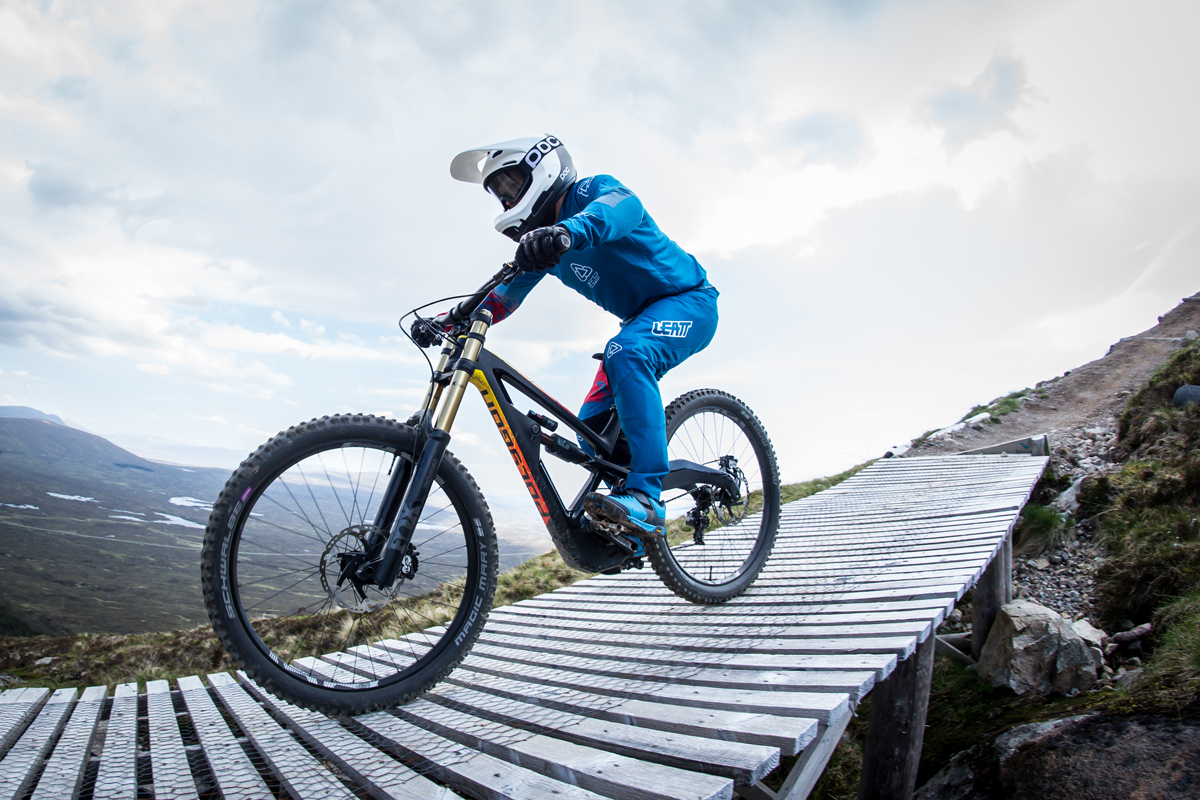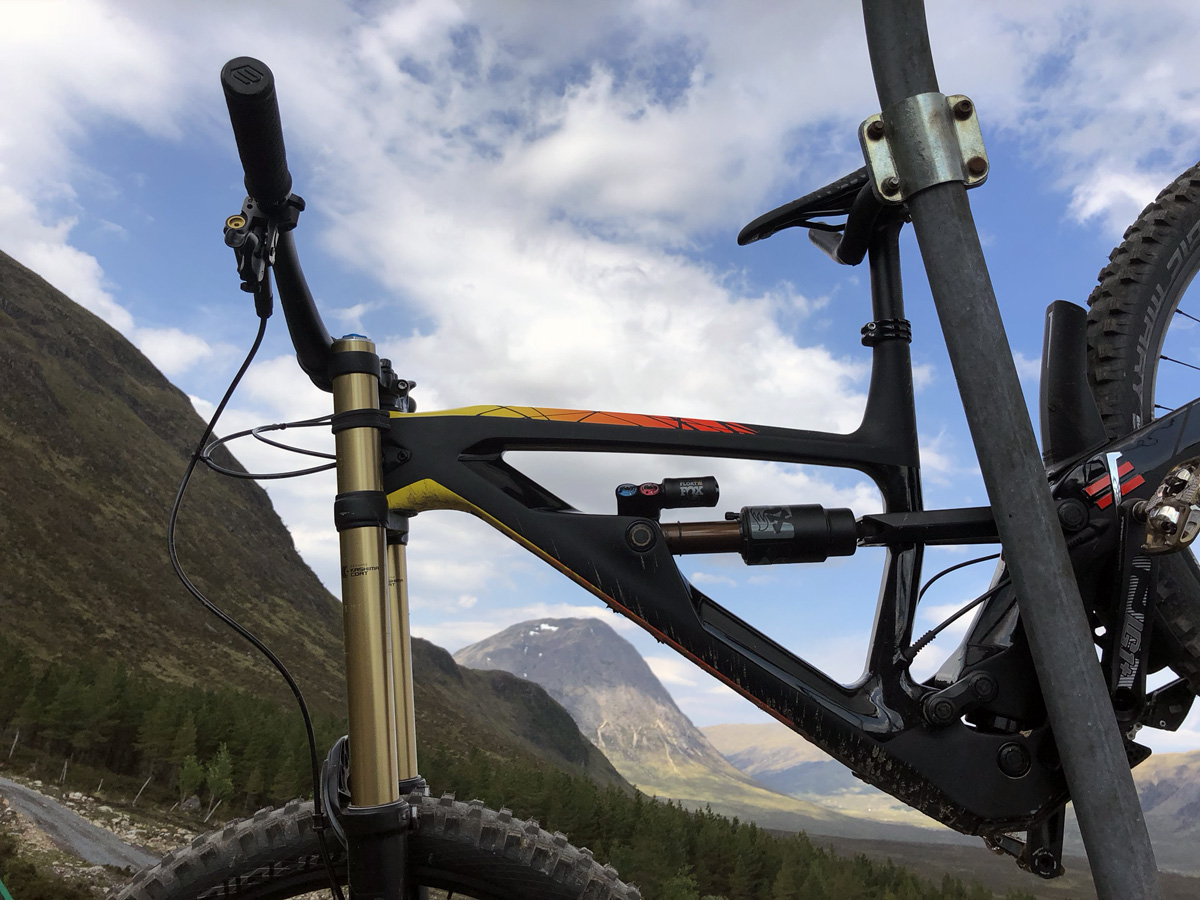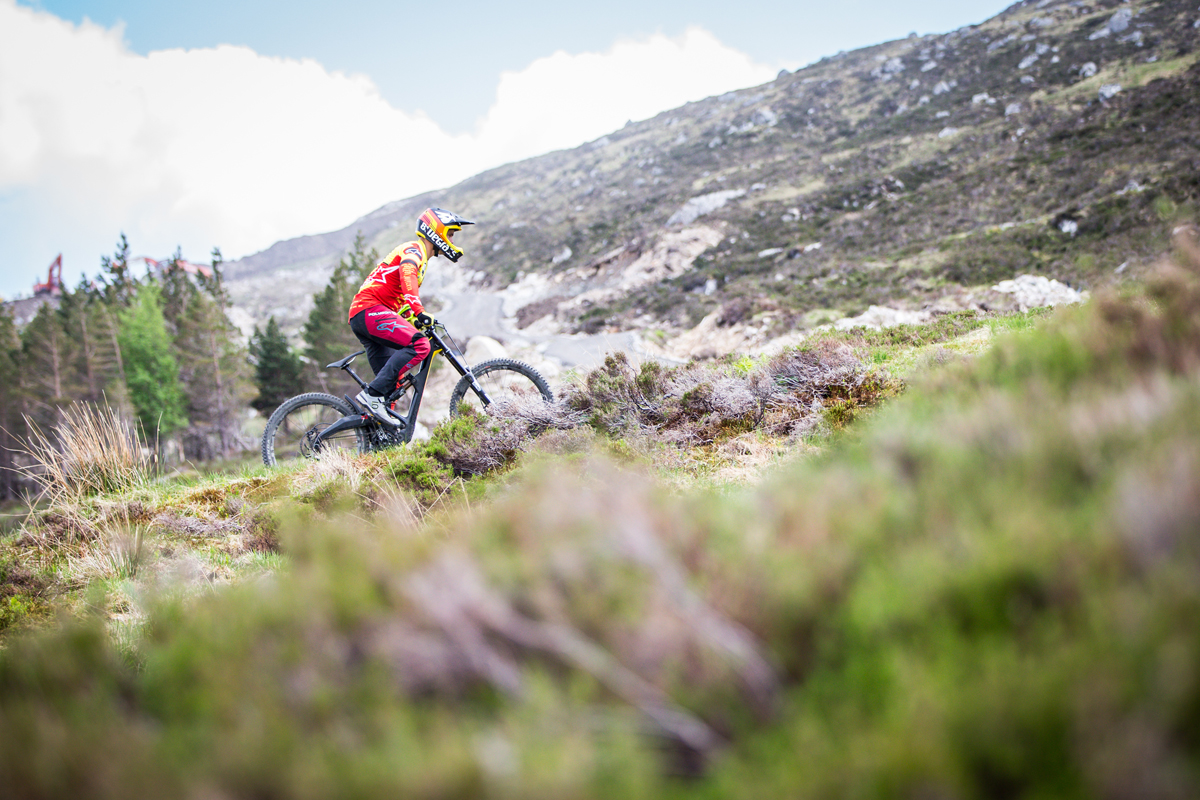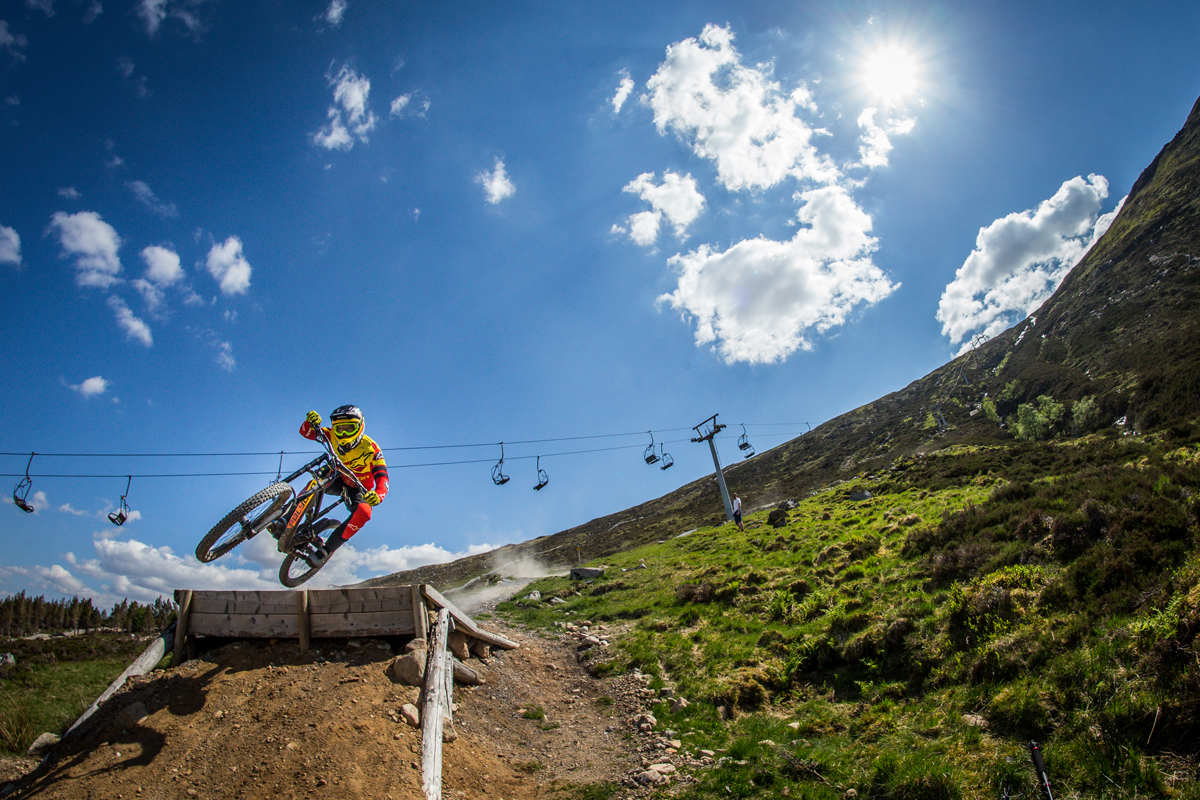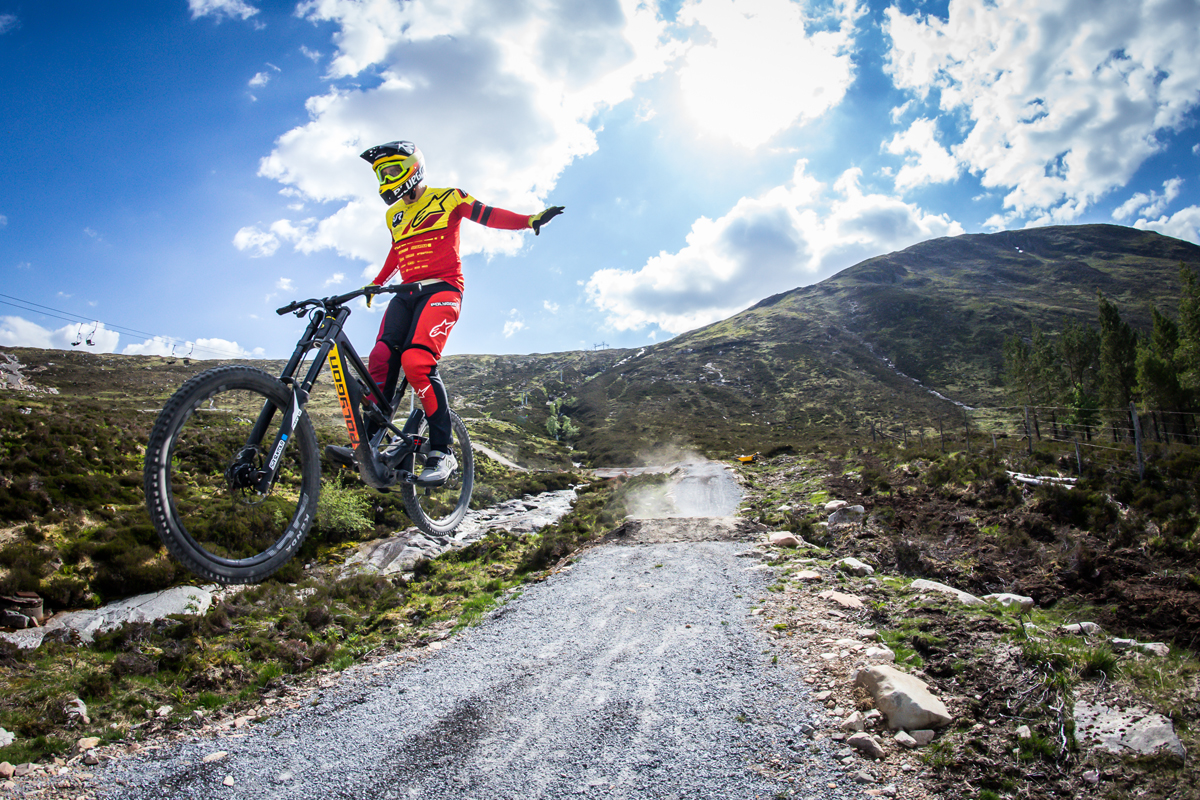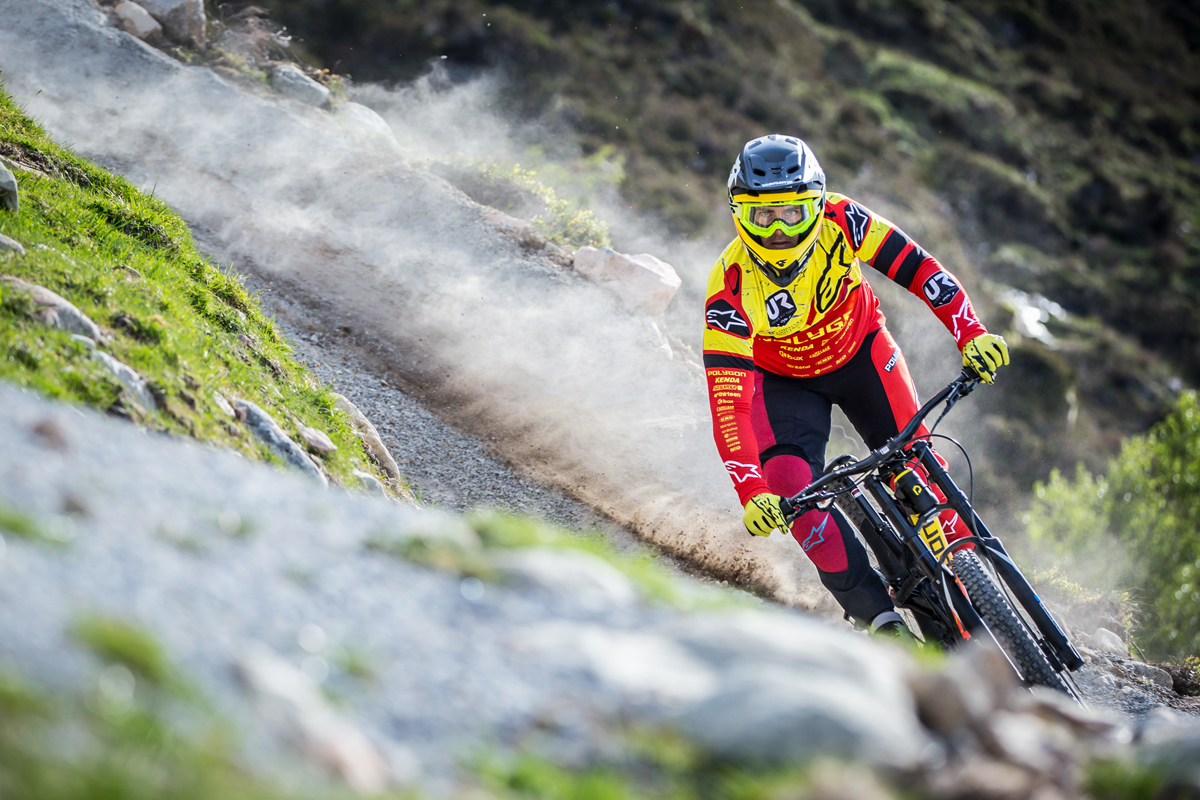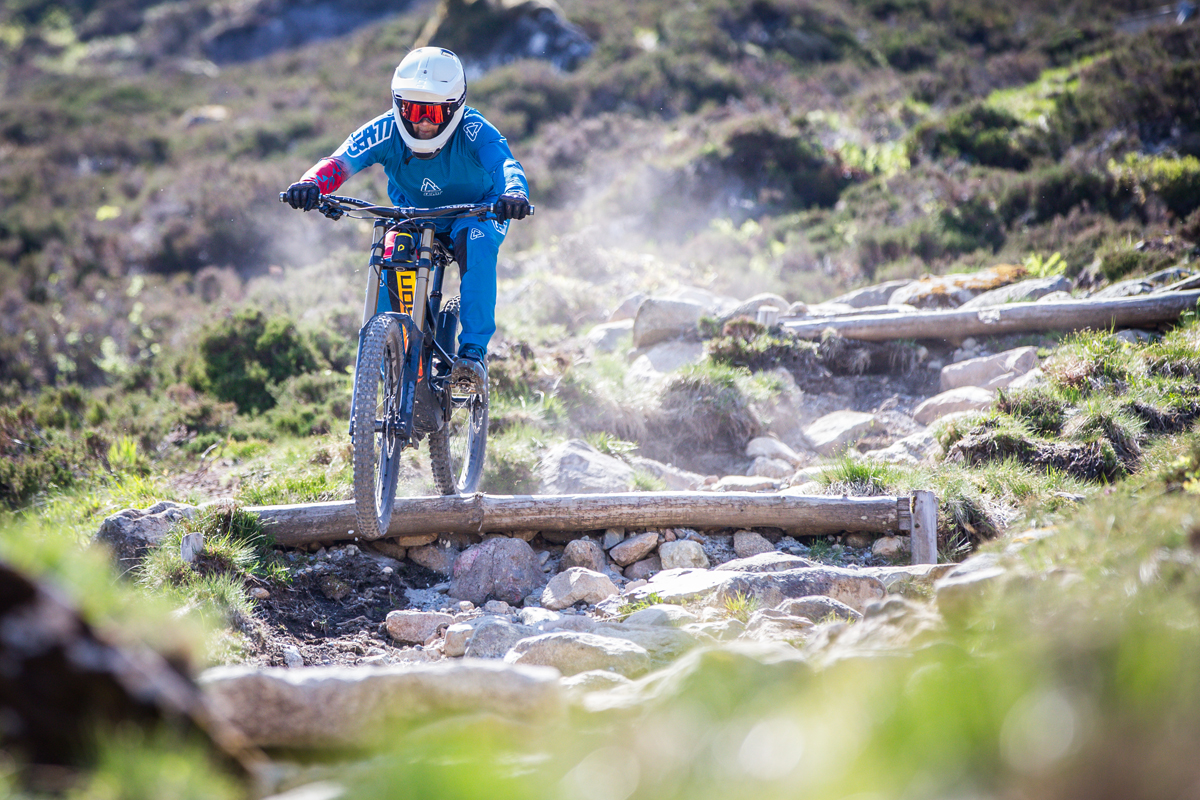Upon arrival to Scotland, I still wasn’t sure where we would be riding. All I knew is that we were there to ride the new DH bike from Polygon and we would be staying very close to Fort William the week before the World Cup. That turned out to be a bit of a fake out though, as we turned the opposite direction the morning of the first ride.
It turns out that we drove right past the trail system on the way into the lodge – it was just a tiny ribbon of trail cut into the side of a small but formidable mountain. Upon closer inspection, that tiny little ribbon of trail turned out to be a lot harder than it looked, which, in a way was the perfect testing ground for the new XquarOne DH.
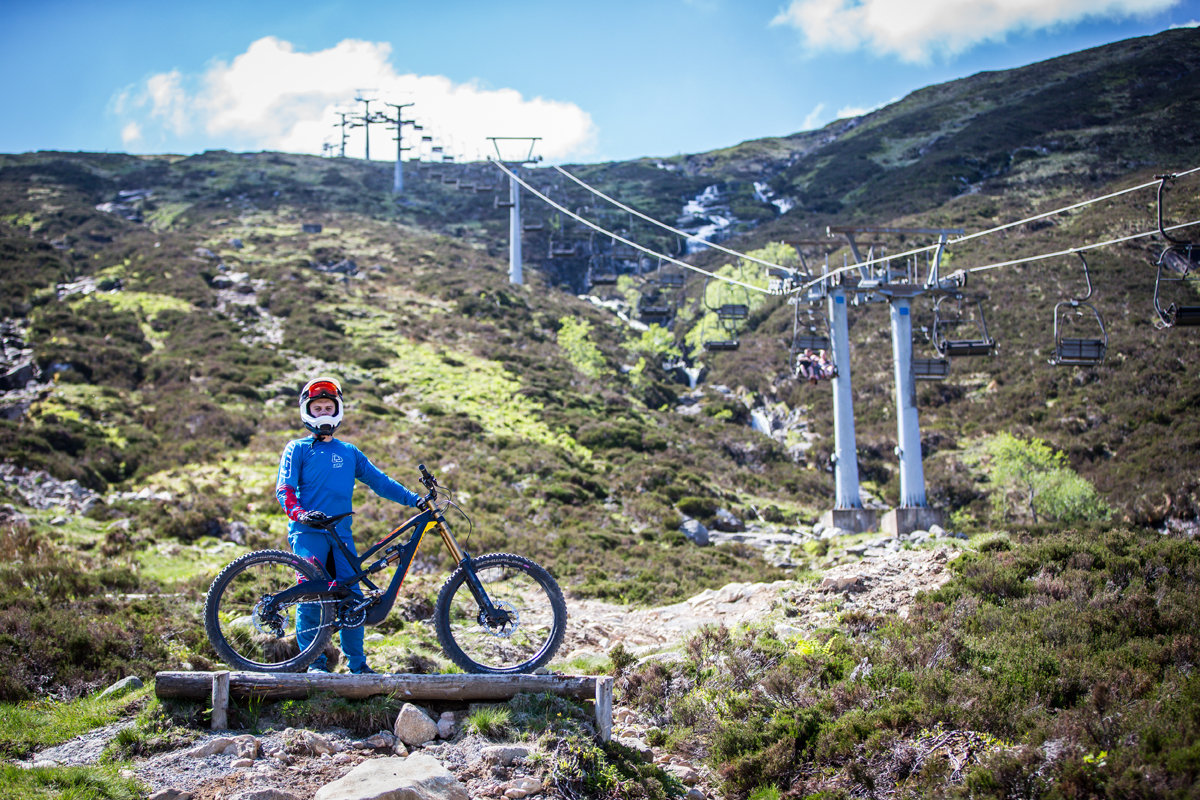
One of the few places in the UK to offer lift accessed trails, Glencoe Mountain offers skiing and snowboarding in the winter and like many ski resorts, transitions to mountain biking in the summer. Unlike a lot of the ski resorts I’ve ridden, Glencoe’s trails are mostly rock surrounded by peat moss which makes for an interesting story when it comes to traction. We apparently lucked out with nearly perfect weather – temperatures in the high 70’s and brilliant sunshine. I’m told that this is often not the case for Scotland.
However, we weren’t quite as lucky with the trails. Glencoe allowed us early access to the trails for the press launch, but that meant that they were still in the midst of redesigning their red flow trail. The result was that we had a single trail on which to test – the infamous Glencoe Black Track. The track is gnarly enough to be the location for the 2018 DH National Championships, and is often considered one of the toughest in the UK. Clearly, for me this would be a week of survival rather than crushing it…
In what’s becoming a signature move of Darrell Voss and the Polygon team, we were sent up the lift with virtually no information on the bike. Granted, I already had the background of the NAILD R3ACT 2 Play suspension system that was developed and implemented on the Polygon XquareOne EX trail bike, but as it pertained to the DH bike we were left in the dark. The goal being that we formed our own opinions on the bike before getting fed the marketing spin, which seems to be the way to do it. There was also very little in the way of bike set up – mostly air pressure on the shock and fork, and after an approving nod from Darrell as he watched us sprint through the parking lot, we headed for the lift.
After an incredibly scenic ride to the top which included the vast Scotish country side, waterfalls, streams, and insane natural beauty, it was time to strap in and send it. Or hold on.
I’ve seen Glencoe described as a one big rock garden, and that’s not too far from the truth. In less than a mile it drops 1,000 feet with an average grade of -25%. It’s steep. It’s also quite loose with plenty of dust, rock, and often mud and water over top of the rock slabs. Long story short, it’s not the place you want to show up jet lagged on a brand new bike when it’s been months since your last DH laps. But in a way, that highlights what the XquarOne DH does really well.
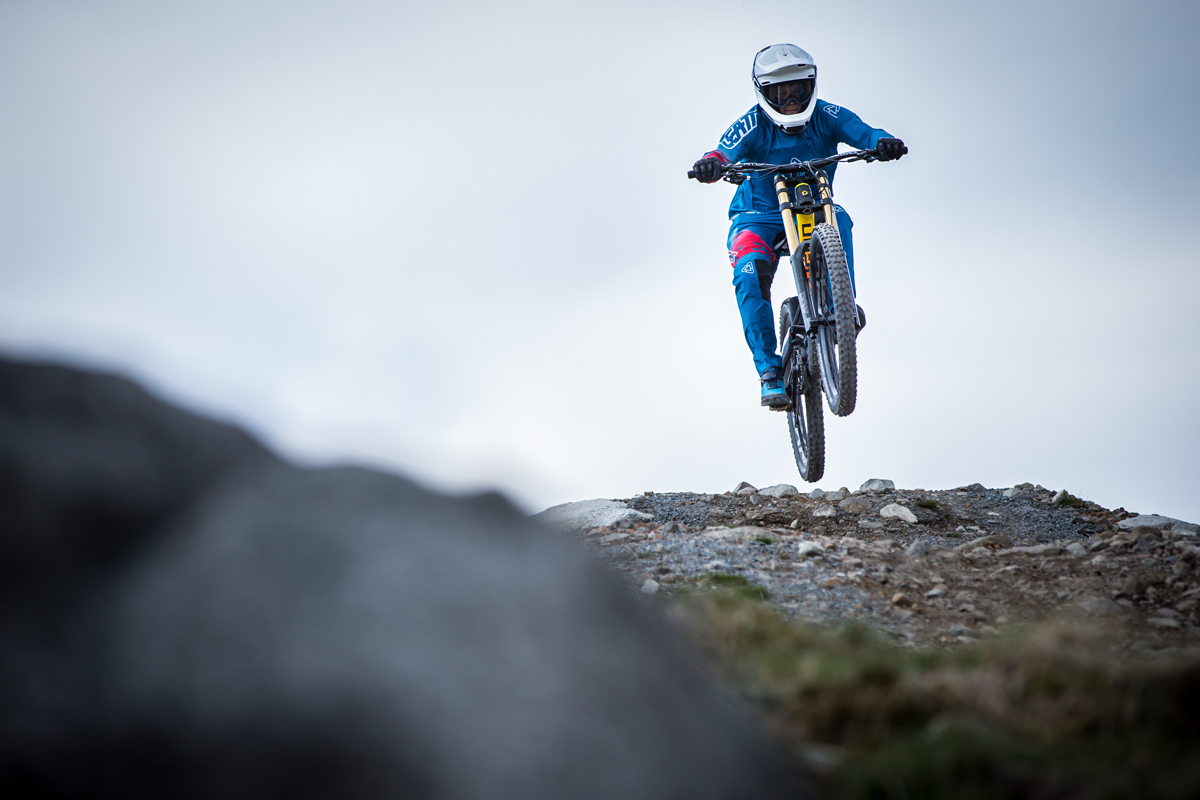
In spite of being unsure of myself as I pinballed down the trail, the XquarOne DH kept things in check admirably well. Considering how rocky the track was, I left impressed at how well the rear wheel tracked over any obstacle in its way. Traction – both while under power, braking, and turning was particularly impressive. With each run I progressively got faster as I learned to trust the bike and read the trail, and while that’s a normal thing to occur, the XquarOne DH seemed to allow me to progress more rapidly than normal.
As Mick Hannah demonstrated for the camera, the bike is also no slouch when it comes to climbing and pedaling. In fact, it pedals way better than a downhill bike with 218mm of travel should. I won’t go as far as saying you would want to pedal this thing up the trail – but you could. You’re still lugging a DH bike up the mountain and the gearing (1×7 in this case) is no where near adequate to do any serious climbing, but the pedaling dynamics are certainly there. More importantly, Polygon has managed to create a pedal-able DH bike that has almost zero pedal feedback regardless of the situation.
Clearly, Mick Hannah could ride the wheels off anything. But when he says that the XquarOne is the first bike in his career that really blew his mind, I’m inclined to believe him. What’s more important though, is that even though Mick can absolutely shred on the XquarOne DH, it’s actually designed with the consumer in mind. Part of having a race team will always be getting your pros down the hill with the fastest time, but Polygon wanted to ensure that the XquarOne DH would make the average rider feel like super man every time they jump on board.

Even at the top end of the range, the XquarOne DH9 build that we were riding is still pretty reasonable at $6,399. That includes a full carbon frame, a Fox 40 Float fork and Float X2 Air shock, Race Face Atlas cockpit, and a SRAM X01 DH 1×7 speed group with e*thirteen wheels, guide, and crank. At 5’8″ I was comfortably on a medium, which is usually what I reach for in most bikes. To be honest, I don’t think I would like 29″ wheels for a DH bike so I’m happy that Polygon stuck with 27.5″ for the XquarOne DH.
Conclusion
When it comes to DH bikes, I’d say I’m pretty average at best. While I started racing downhill from a fairly early age, a few injuries have gotten in my head and kept from from charging like I used to. And I’m OK with that. That doesn’t mean that I don’t still enjoy riding downhill though, quite the contrary. So to me, the ideal DH bike isn’t so much about going huge, but how well it tracks over rough terrain and maintains its composure when you choose the wrong line or get in over your head.
That also happens to be exactly where the XquarOne DH really shines. More than a few times out on track I blew a corner, or missed a line and thought “well, at least I’ll get to test these pads from Leatt!” Fortunately, that opportunity never arose thanks to a bike that is more than willing to help you out of a tough spot. Regardless of your skills the XquarOne DH seems to eat up anything in its path while maintaining that signature pedal efficiency that the NAILD R3ACT 2 Play suspension system is known for.
The result is a bike that defies a lot of pre-conceived notions about downhill bikes, and something that I would love to use to get back to my DH roots.
For the full tech break down on the XquarOne DH, check out the first post here.
